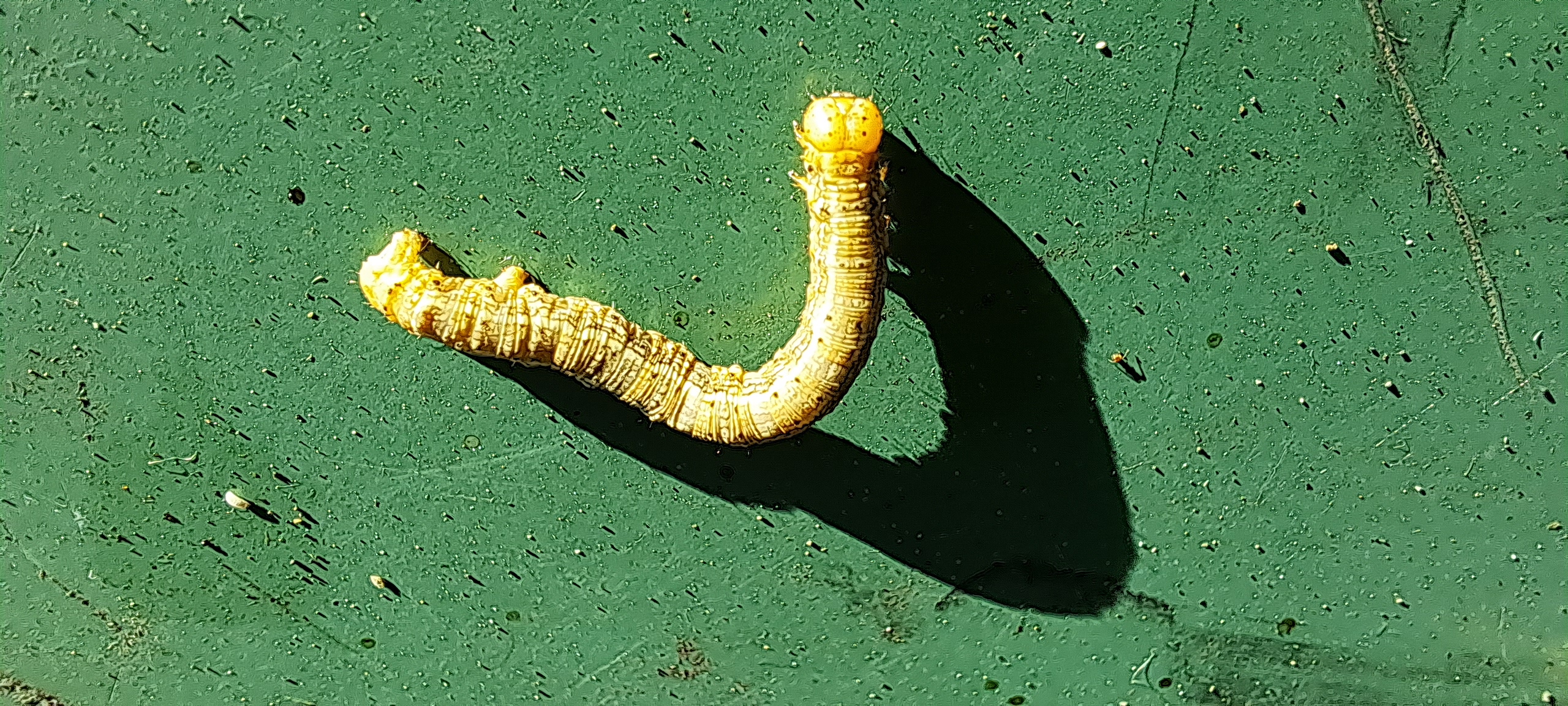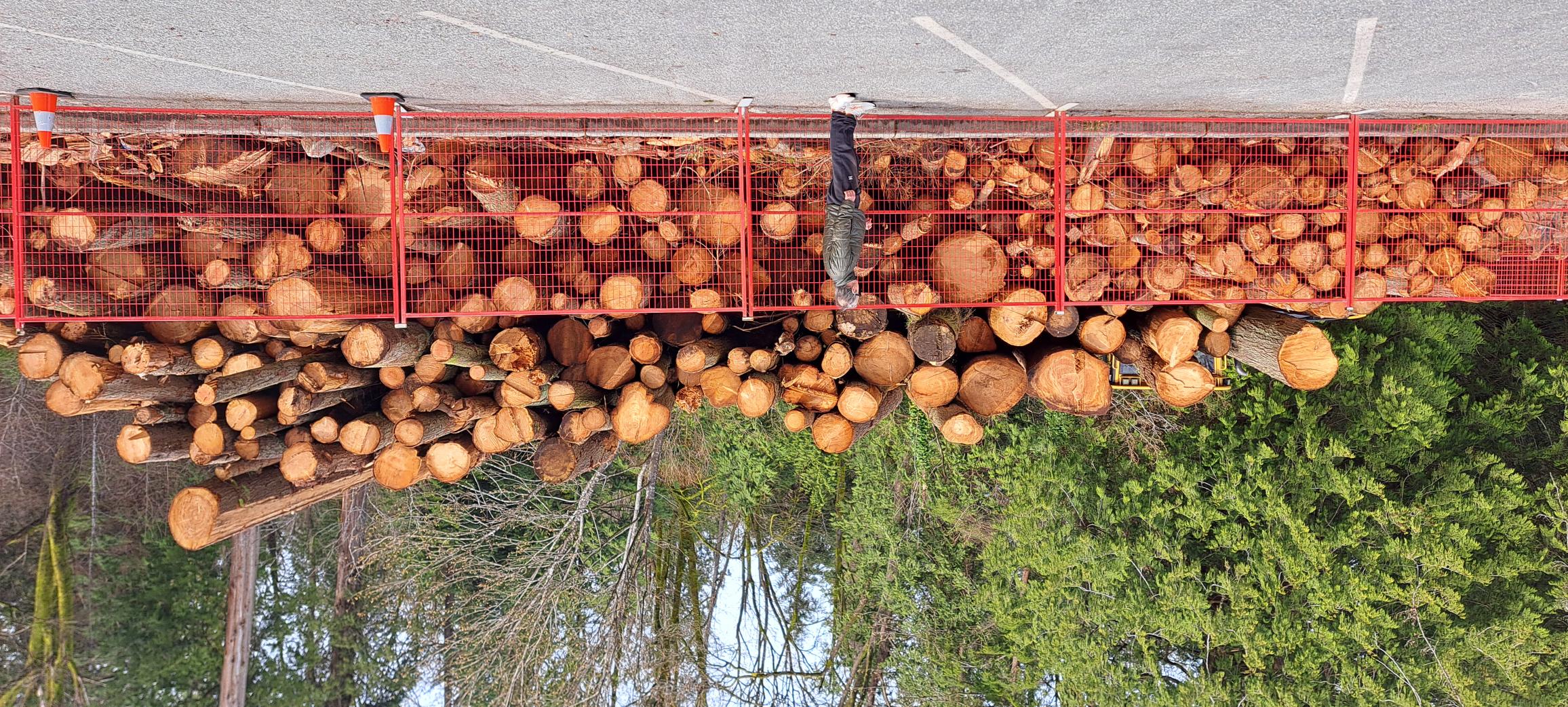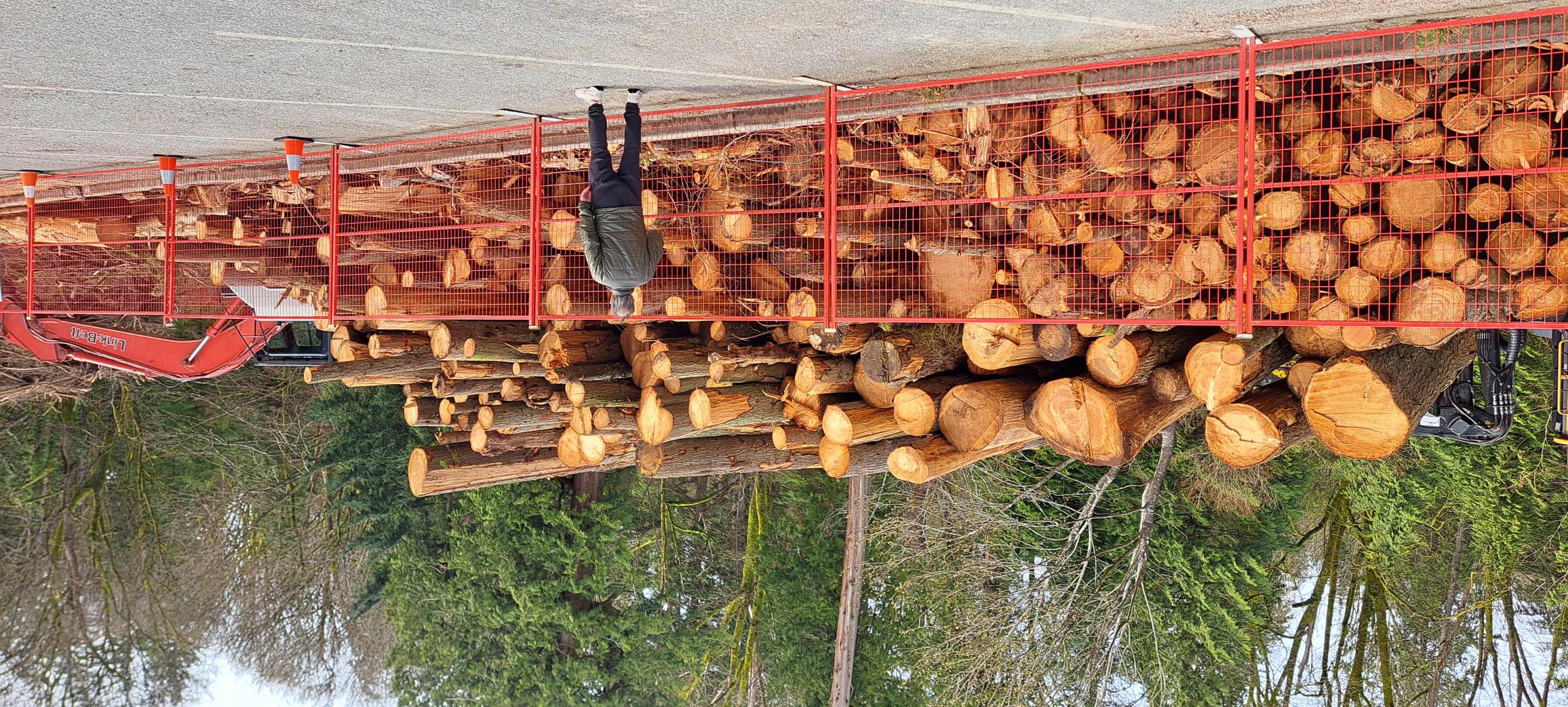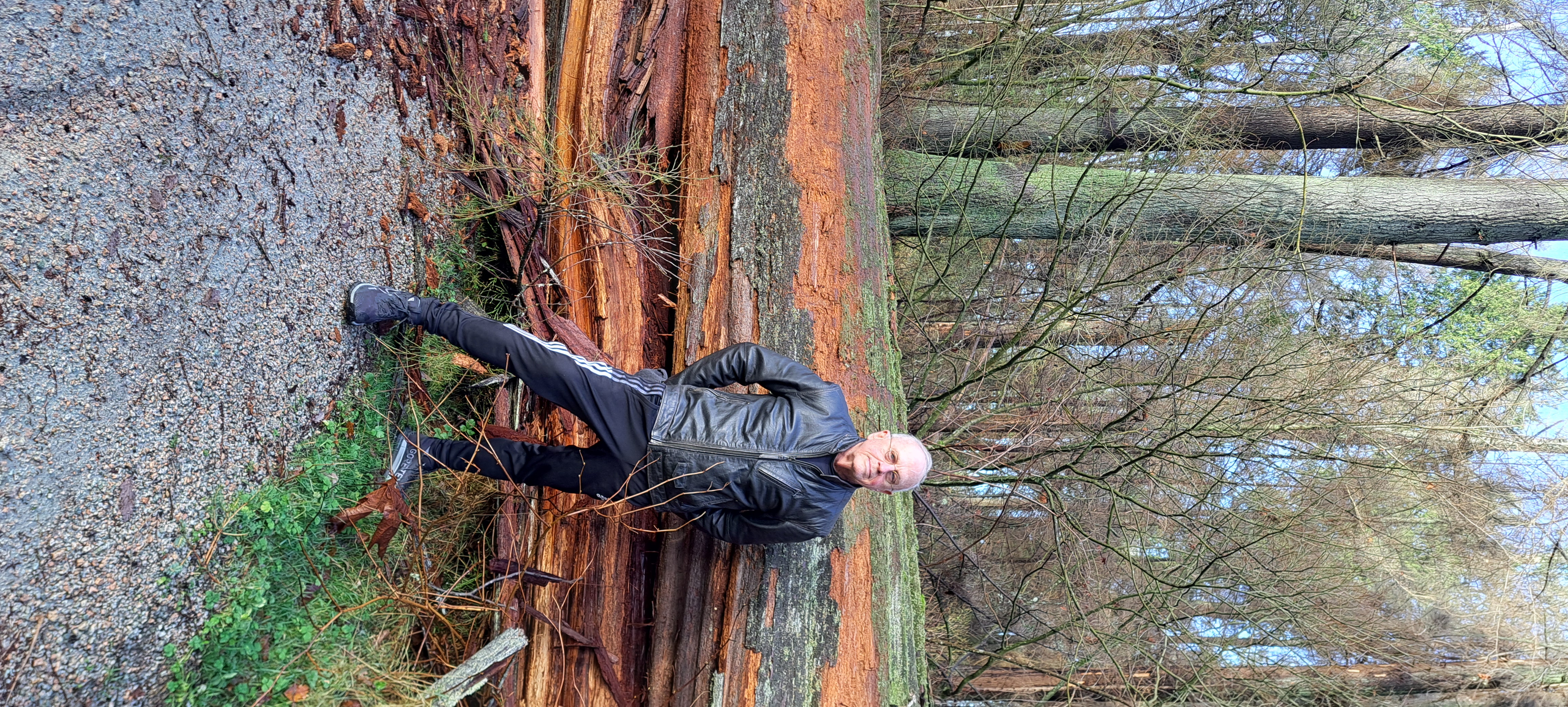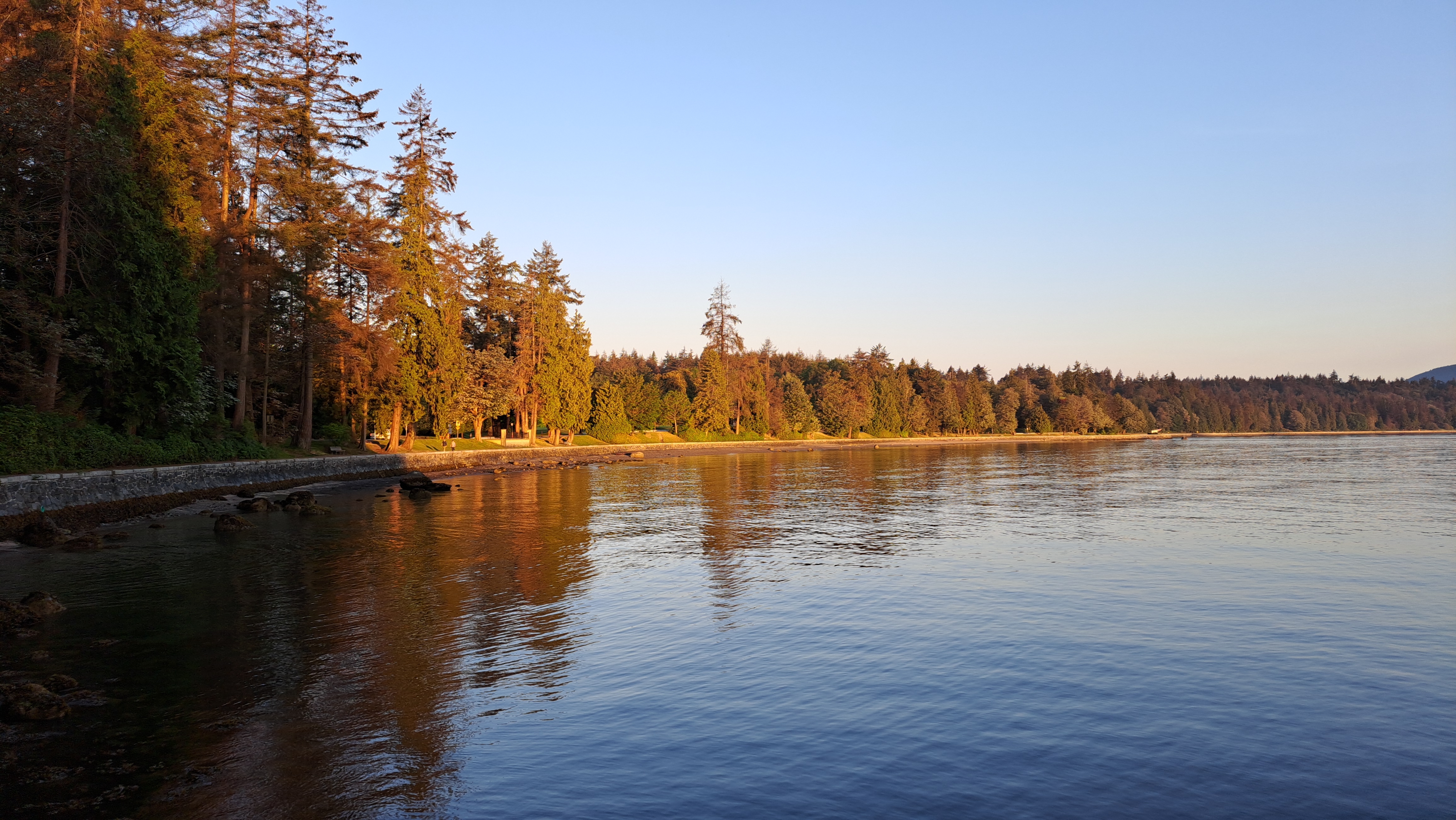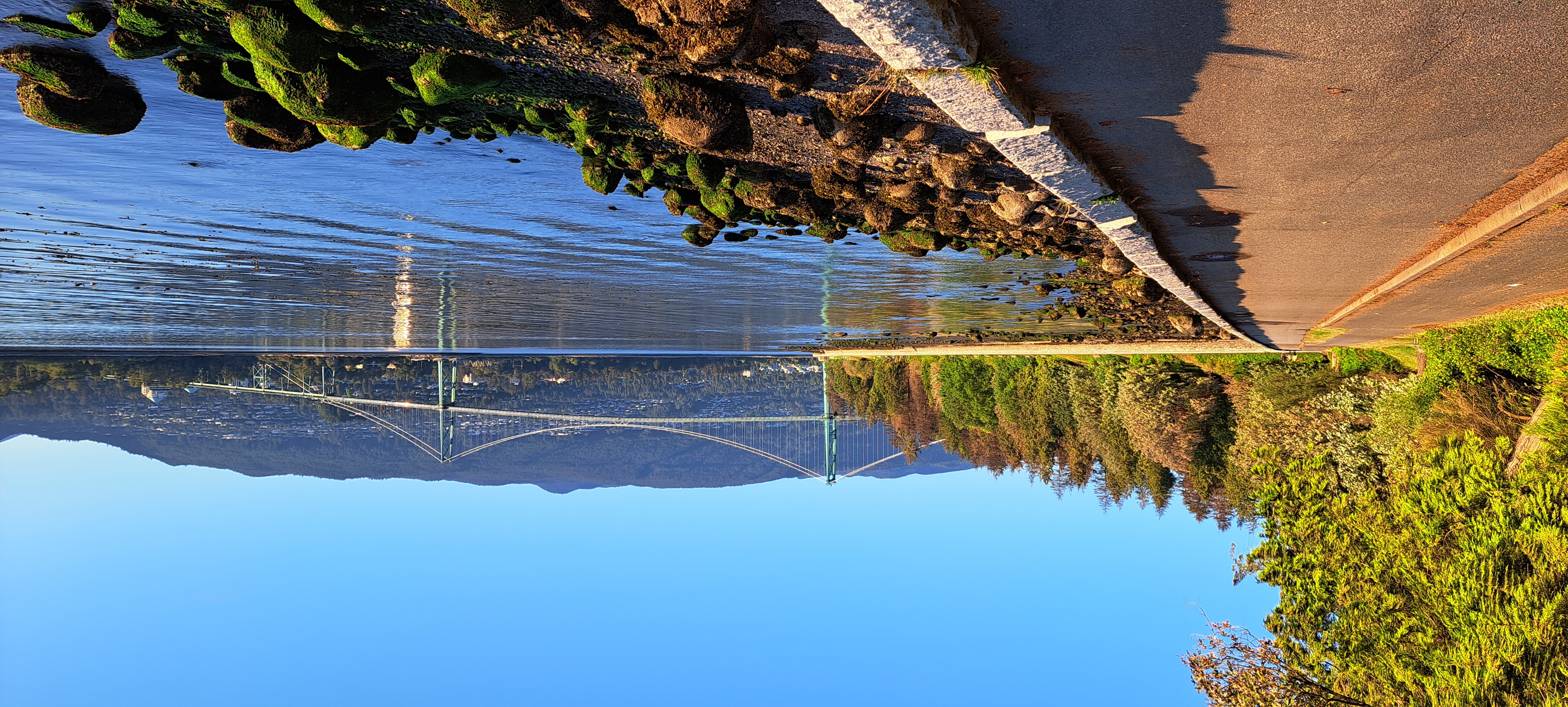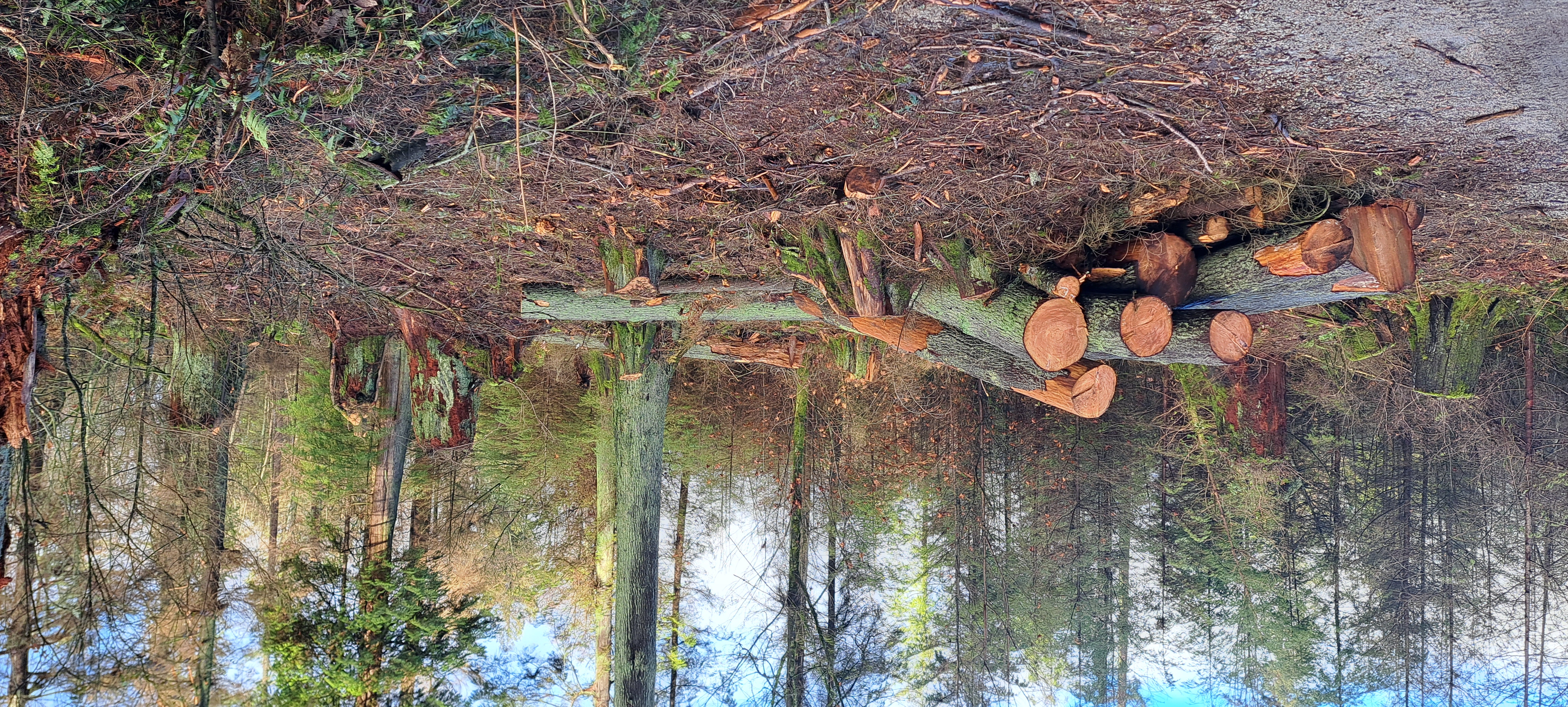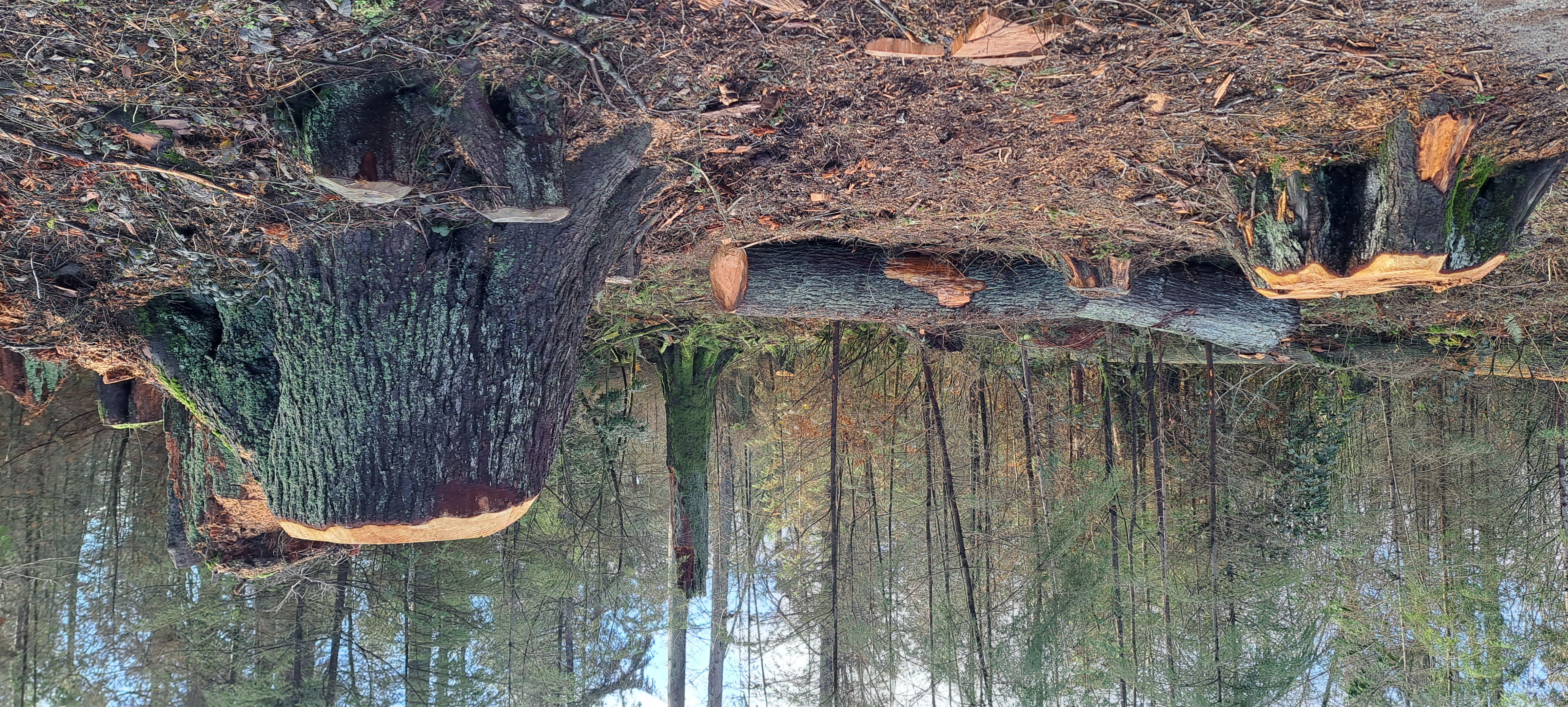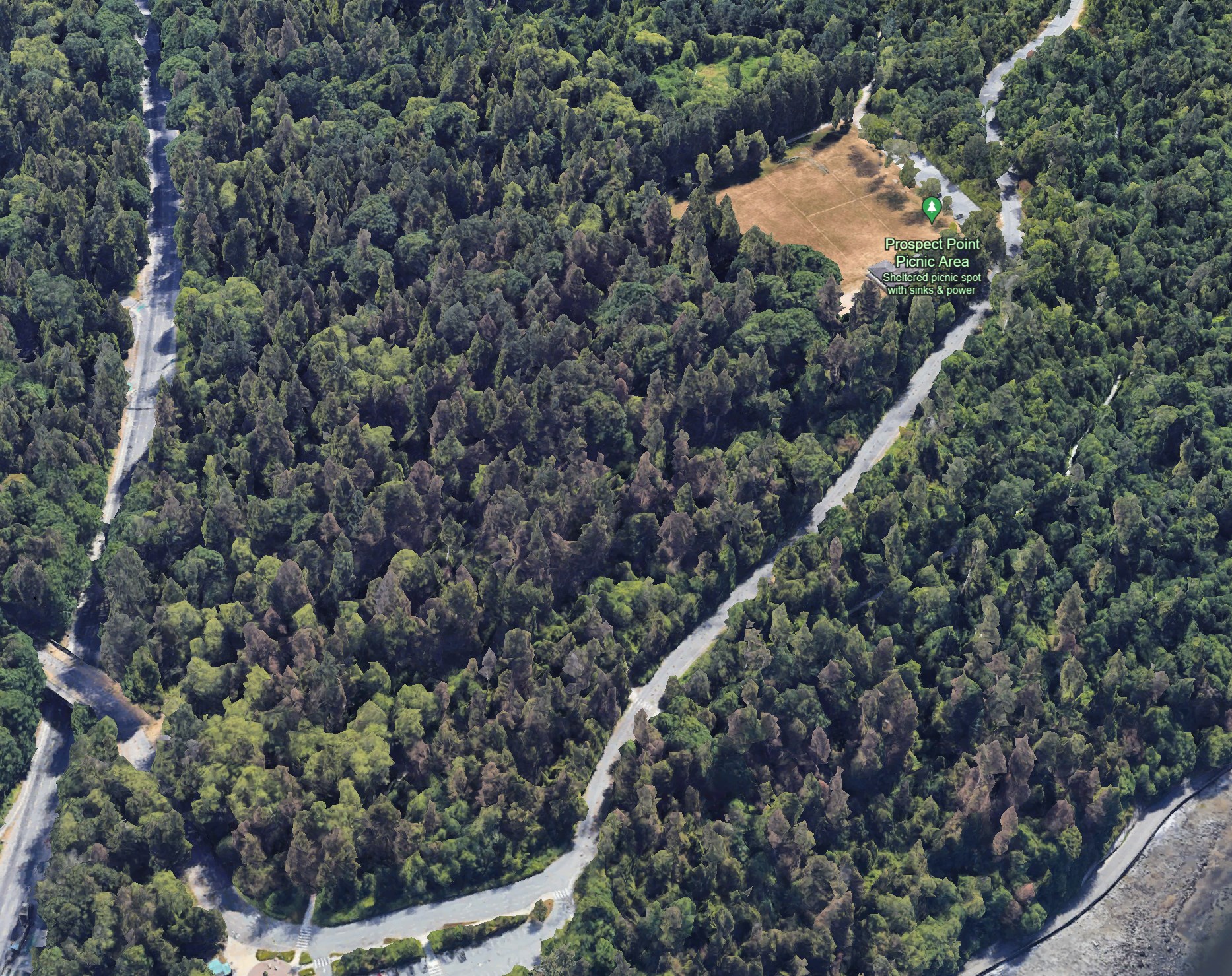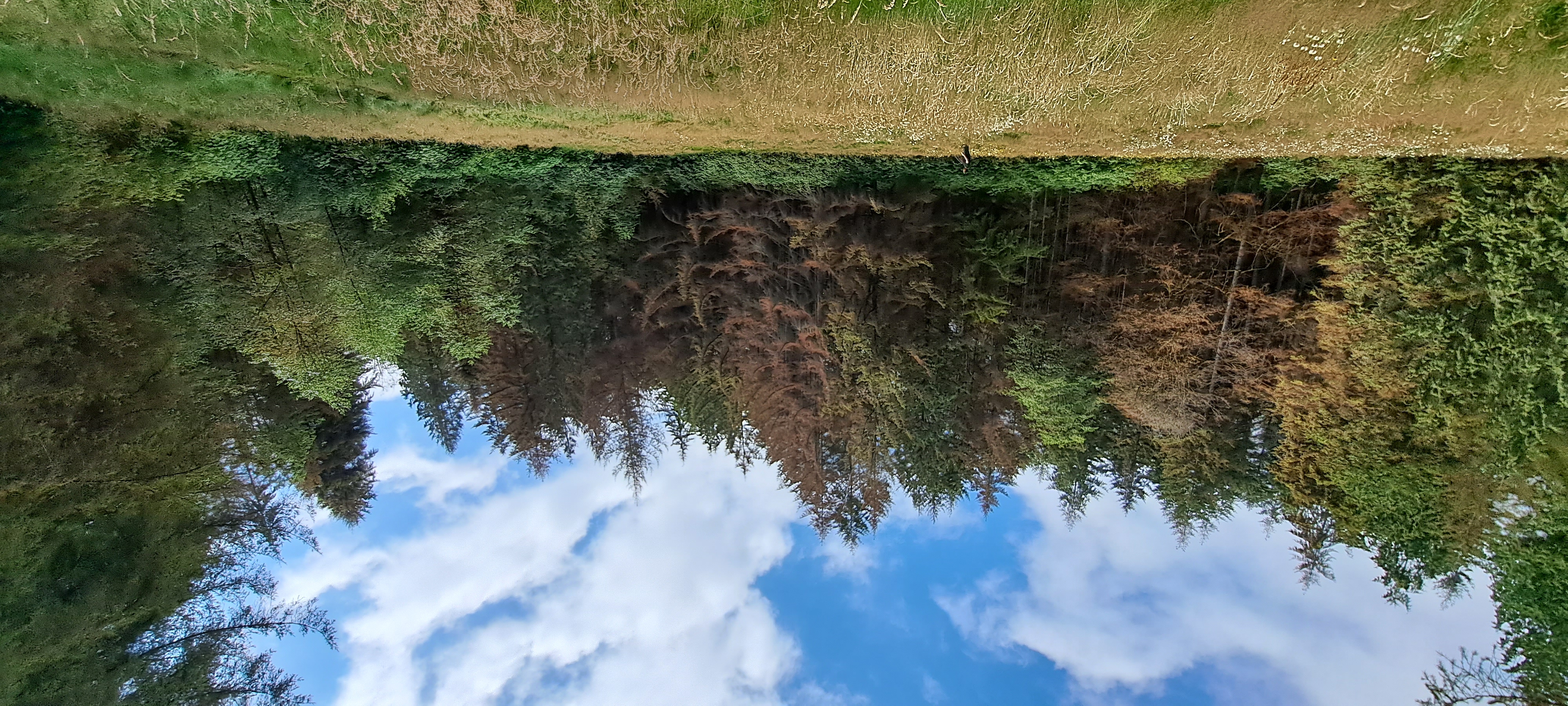The Western Hemlock Looper Moth, Lambdina fiscellaria lugubrosa (Hulst), a member of the Lepidoptera family, arrived mainly in 2020 at the north-east end of the 1000 acre, mostly forested, Stanley Park. The moths likely crossed over Burrard Inlet from the North Shore which was under sustained attack that year, particularly in the Capilano watershed. The Divisional Environmental Manager for Watersheds, Metro Vancouver, said in an interview with Global News in September, 2020, that the "moths were in full flight in the watersheds". In what may have been a reasonable statement for managing watershed forests, he said the “death of some trees isn’t necessarily a bad thing because it makes way for younger new growth”  https://globalnews.ca/news/7327963/swarms-of-western-hemlock-looper-moths-invade-parts-of-b-c-south-coast/. Although Metro Vancouver is only responsible for the water-supply tunnel through Stanley Park, and not park management, it has historically provided a budget for park management due to its role as a key regional attraction for those within the Regional District.
https://globalnews.ca/news/7327963/swarms-of-western-hemlock-looper-moths-invade-parts-of-b-c-south-coast/. Although Metro Vancouver is only responsible for the water-supply tunnel through Stanley Park, and not park management, it has historically provided a budget for park management due to its role as a key regional attraction for those within the Regional District.
Now the looper Moths and larvae have arrived in Stanley Park, causing severe defoliation and likely mortality in the thrifty 80+ year old Douglas fir and Western hemlock stand near Brockton Point and along Burrard Inlet to Prospect Point, probably a similar dismissal of the severe threat would now longer be made by Metro Vancouver, particularly as protecting older trees is important for aesthetics, recreation and tourism in Stanley Park, none of which are components of watershed forest management as the public are excluded for health reasons. The lingering effects of the heat dome that covered the Lower Mainland in 2021 have been mentioned as possibly and/or partially responsible for the mortality. The 2021 heat dome lasted from June 25 -July 7.
In 2022, the looper was causing massive destruction and likely mortality in the south-east part of the park, around Beaver Lake, behind the Hollow Tree, and on down to Second Beach pool. The Vancouver Board of Parks and Recreation is responsible for managing Stanley Park's resources and a duty of care to the People of Canada under the Canadian Government's perpetual lease. The Board was apparently caught off-guard as to the intensity of attack each year, preferring to forego any action until it was too late each year to an aerial spray with the common treatment, non-toxic Bacillus thuringiensis subsp. kurstake (BtK). Indeed, there were voiced concerns about effects on supposed butterfly and other moth populations (uncounted). However, studies have shown that its impact on non-target species is minimal when used correctly.
The devasting and devastatingly expensive results were reported by RDI in its companion website rdi3d.com on the Stanley Park page.
The larvae (caterpillars) inch along on front and back feet, arching their backs. They start at the tops of the trees munching wastefully at the needles which fall barely eaten to the ground, then drop down on silk threads produced in their mouths to find new foliage to destroy. The barely-chewed needles, frass (their granular droppings), and many of the loopers themselves that run out of foliage to attack thickly coat the ground and benches under the defoliated trees. Many of the loopers remain suspended from their silk strands and get caught on the passers-by. While commencing in May, the major feeding months are mid-July to October before the caterpillars turn into pupae then moths, and create a flying frensy resembling a grey snow storm in the pursuit of mates to then lay eggs in the crevasses of the trees they intend their offspring to attack the following year: See the BC Government page:  https://www2.gov.bc.ca/gov/content/industry/forestry/managing-our-forest-resources/forest-health/forest-pests/defoliators/western-hemlock-looper and the US Forest Service page:
https://www2.gov.bc.ca/gov/content/industry/forestry/managing-our-forest-resources/forest-health/forest-pests/defoliators/western-hemlock-looper and the US Forest Service page:  https://apps.fs.usda.gov/r6_decaid/views/western_hemlock_looper.html.
https://apps.fs.usda.gov/r6_decaid/views/western_hemlock_looper.html.
Outbreaks usually last about three years, after which they are generally brought under control by the action of parasites, predators, and diseases. Heavy rains during the moth flight period can reduce egg-laying and hasten the decline of an outbreak - see  https://www2.gov.bc.ca/assets/gov/farming-natural-resources-and-industry/forestry/forest-health/defoliators/western_hemlock_looper_biology.pdf.
https://www2.gov.bc.ca/assets/gov/farming-natural-resources-and-industry/forestry/forest-health/defoliators/western_hemlock_looper_biology.pdf.
The infestation can be quite easily controlled by the aerial application of a non-toxic, non-alive biological agent called Bacillus thuringiensis var. kurstaki (Btk) which is ingested and destroys the intestinal lining, killing the looper. See the Health Canada page on Btk:  https://www.canada.ca/en/health-canada/services/consumer-product-safety/reports-publications/pesticides-pest-management/fact-sheets-other-resources/bacillus-thuringiensis-subspecies-kurstaki.html and FLRORD: https://www2.gov.bc.ca/gov/content/industry/forestry/managing-our-forest-resources/forest-health/invasive-forest-pests/lymantria/what-is-btk. As larvae can emerge throughout a lengthy period from May to October, several applications may be required. Larvae are most susceptible in the early stages. There are six developmental stages, or "instars". According to the Forest Health Officer, Coast Forest Region, FLNRORD, application should be made during the first three of the six developmental instars which has likely passed this year. The Btk is not effective against adult moths as they don't eat, so timing is everything. While it may be too late for the Parks Board to act this year to save many trees, the treatment should be applied in May next year, particularly if nothing is done this year. The Forest Health Officer has had discussions with the Vancouver Parks Board over the past two years, but has not heard of any concrete action being taken against the looper in 2021 and 2022. Another interested party, the Stanley Park Ecology Society, at the time of writing this blog, has not yet responded to my report and request for input. The Vancouver Watershed people also reportedly took no action over the past 2-3 years, likely wanting to avoid controversy or perhaps experienced a waning in the populations of the looper. FLRORD does not have jurisdiction in parks and city areas, but was active this year controlling the Gypsy Moth on request in aerial flights with Btk over the city of Burnaby without controversy except for complaints of noise from the aircraft. His point of contact with the Parks Board has been the Integrated Pest Management Coordinator for the City of Vancouver.
https://www.canada.ca/en/health-canada/services/consumer-product-safety/reports-publications/pesticides-pest-management/fact-sheets-other-resources/bacillus-thuringiensis-subspecies-kurstaki.html and FLRORD: https://www2.gov.bc.ca/gov/content/industry/forestry/managing-our-forest-resources/forest-health/invasive-forest-pests/lymantria/what-is-btk. As larvae can emerge throughout a lengthy period from May to October, several applications may be required. Larvae are most susceptible in the early stages. There are six developmental stages, or "instars". According to the Forest Health Officer, Coast Forest Region, FLNRORD, application should be made during the first three of the six developmental instars which has likely passed this year. The Btk is not effective against adult moths as they don't eat, so timing is everything. While it may be too late for the Parks Board to act this year to save many trees, the treatment should be applied in May next year, particularly if nothing is done this year. The Forest Health Officer has had discussions with the Vancouver Parks Board over the past two years, but has not heard of any concrete action being taken against the looper in 2021 and 2022. Another interested party, the Stanley Park Ecology Society, at the time of writing this blog, has not yet responded to my report and request for input. The Vancouver Watershed people also reportedly took no action over the past 2-3 years, likely wanting to avoid controversy or perhaps experienced a waning in the populations of the looper. FLRORD does not have jurisdiction in parks and city areas, but was active this year controlling the Gypsy Moth on request in aerial flights with Btk over the city of Burnaby without controversy except for complaints of noise from the aircraft. His point of contact with the Parks Board has been the Integrated Pest Management Coordinator for the City of Vancouver.
Also considered to be present and seen this month in Stanley Park: Douglas fir tussock moth and potential Japanese beetle defoliation (eating big leaf maple leaves leaving just the veins, and possibly the decorative coniferous specimens at the north end of Brocton cricket grounds and Lumbermen's Arch picnic area). Traps are set around the park presumably for the beetle but no beetles were actually seen on the trees.
Disclaimer: K.B. Fairhurst, PhD, is a Registered Professional Forester (ret.) in BC whose long-standing area of expertise is visual resource management. He does not claim to have expertise nor offer practice in forest entomology or pathology, but is a daily observer of obvious and concerning looper damage, mortality, and increasing wildfire threat in Stanley Park. Dr. Fairhurst can be reached at kbf@rdi3d.ca. Website: https://rdi3d.ca

